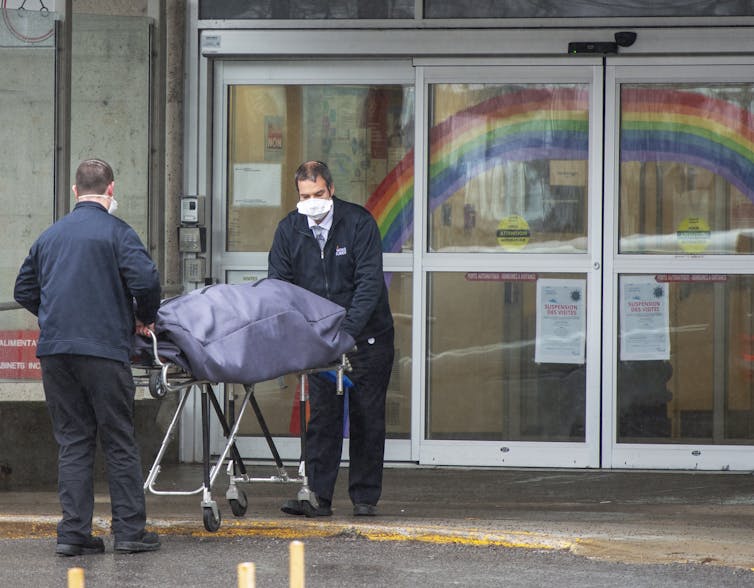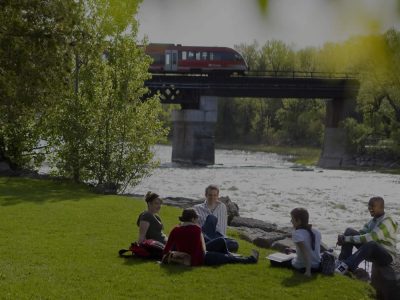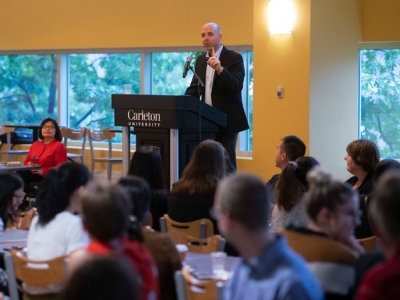By Kristen Pue, Alix J. Jansen and Daniel Westlake
The COVID-19 pandemic has been a humanitarian catastrophe for long-term care facilities. A series of policy failures, combined with existing systemic weaknesses, have left Canadians in long-term care extremely vulnerable to COVID-19.
It’s difficult to overstate the scale of this crisis. Almost 4,000 long-term care residents in Ontario have died from COVID-19, a 28 per cent increase in excess deaths in 2020.
With the vaccination of residents and staff now well under way, it’s time to consider how to reform long-term care to ensure this situation never repeats itself. Many are calling for an end to for-profit care. But non-profits, which make up 28 per cent of long-term care homes, have largely been absent from the discussion.
Governments outperform non-profits, too
We set out to understand whether the type of long-term care home — government, for-profit or non-profit — made a difference in COVID-19 outcomes. Our recently published paper, “Does the Profit Motive Matter? COVID-19 Prevention and Management in Ontario Long-term Care Homes,” finds that government long-term care homes did a better job than both for-profits and non-profits at preventing COVID-19 deaths.
Our modelling predicts that if all long-term care homes had been government-run, 1,348 residents would have died during the pandemic — less than half of the 3,790 long-term care deaths actually experienced. That same modelling predicts 4,977 deaths if all long-term care was for-profit, and 2,822 if all homes were non-profit. So even though the predicted deaths are highest in for-profit long-term care facilities, non-profits also fare badly compared to government.
These findings suggest a need to consider replacing all contracted long-term care with direct government provision — going further than the Ontario Long-Term Care Commission’s recommendation to eliminate commercial long-term care operators.
Abolish non-profit and for-profit homes?
The Long-Term Care Commission released its final report in April. Among other things, the commission recommends preserving a role for commercial for-profits in construction, while suggesting that only “mission-driven” non-profit and for-profit organizations should be allowed to operate long-term care facilities.
We have two concerns with this recommendation.
First, we find the distinction between “mission-driven” and “commercial” for-profit organizations a bit perplexing. It’s difficult to see how one would reliably ascertain whether a for-profit is “mission-seeking” and will remain so in the future. By definition, a for-profit organizational model is geared toward profit-seeking.
But more fundamentally, this recommendation fails to address the reality that government-run long-term care homes have done a better job of preserving life than both for-profits and non-profits. Our paper clearly finds that governments were the safest during the pandemic. That means we should consider the possibility that all long-term care should be replaced with government facilities.
Why have non-profits performed so badly?
Whether we should keep non-profit long-term care facilities depends on why non-profits under-perform government homes in infection management and possibly other measures of service quality. This is an important question to which we lack satisfying answers.
The association between for-profit provision and lower care quality is obvious and well-understood: there is also a large body of long-term care research demonstrating that for-profits under-perform government providers on a range of quality indicators.

THE CANADIAN PRESS/Ryan Remiorz
But there has been very little study of non-profit service quality, in the pandemic or otherwise. We clearly cannot rely on a common bogeyman — the profit motive — to explain non-profits’ poor performance relative to government. So what explains the middling performance of non-profits?
In our paper we introduce two possible explanations.
The structure of non-profits gives them some disadvantages in terms of investing in the future and being financially prepared for crises. For example, it’s difficult for non-profits to borrow money. The poor performance of non-profits may reflect a struggle to react to the pandemic in light of these structural disadvantages.
If that’s why non-profits under-perform governments, reforms should either address these disadvantages or, if this is not possible, end non-profit provision of long-term care.
Access to resources
Another possible explanation we present in the paper is cross-subsidization.
Both non-profits and government-run facilities have access to resources that enable them to provide a better quality of service. Governments can use tax revenue, while non-profits can cross-subsidize with philanthropic donations. But even though non-profits can cross-subsidize, perhaps they can’t do so as effectively as government-run homes, which would explain their lacklustre performance in preventing COVID-19 outbreaks.
If this is why non-profits are under-performing government facilities, that’s a clear indicator that public funding is insufficient to cover the real cost of long-term care.
We need to develop a clear understanding of why non-profit long-term care providers lost so many residents to COVID-19, and whether they under-perform government on other indicators. Maybe all non-profit homes should be taken over by government, or maybe more incremental changes would rectify the gap.
Understanding why non-profits were unable to manage outbreaks as well as government homes is the first step toward deciding what to do about it.
This article is republished from The Conversation under a Creative Commons license. Carleton University is a member of this unique digital journalism platform that launched in June 2017 to boost visibility of Canada’s academic faculty and researchers. Interested in writing a piece? Please contact Steven Reid or sign up to become an author.
All photos provided by The Conversation from various sources.
![]()
Tuesday, June 8, 2021 in The Conversation
Share: Twitter, Facebook



